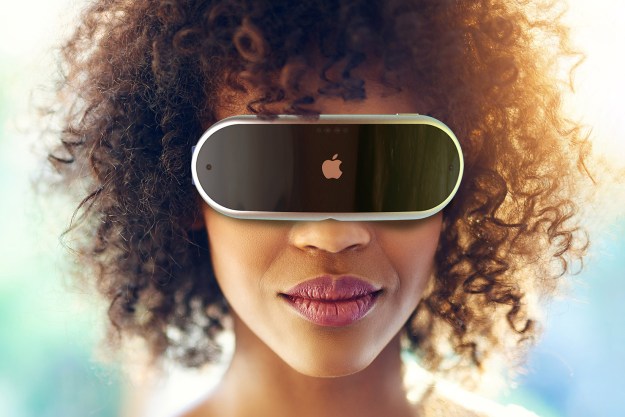Tinder is launching a virtual reality headset. Gotcha! It’s not doing anything of the sort. Instead, the dating app has set up a stall at CES with its very own fake VR device, all for the LOLs — its words, not ours.
If you happen to be at the convention in Las Vegas and can tear yourself away from the multitude of product launches, you can go and stare into the eyes of another person using Tinder’s hollow shell of a device. The company claims its little publicity stunt marks its bid to take the “V out of VR.”
“We created our multi-user VR headset with the Tinder experience in mind. Real people having a real experience, and like the app, it only works with a double opt-in,” explains the company in a blog post. But, what happens if you don’t have anyone to stare back at you? Will you be left alone to stare longingly into the void while the rest of the CES crowd simply mulls around you? It’s almost as depressing as not connecting with that supposedly special someone you super-liked on Tinder.
The company has even created a sleek ad, voiced by a British narrator, for the fake device. The clip sees the rather bulky dual headset gradually revealed, with the red Tinder logo emblazoned on its side. As the camera pans out from the darkness, we see the device worn by two people (a man and a woman) as they’re forced to stare at one another.
Tinder may tout itself as a platform that’s all about the “human connection,” but in actual fact its app is viewed by some as a mere numbers game. Boiling down social relations to the simplest of gestures (Tinder pioneered the swipe-based interface) hardly seems like a way to cultivate connections.
Instead of encouraging the rest of us to get up off our backsides and go out and meet people, perhaps it should find a hollow headset of its own to stare into while it considers the real impact it’s had on dating culture.
But we digress. This is all a harmless bit of fun after all. And, in reality, Tinder is well aware of the part VR may play when it comes to online dating in the near future. In Brian Heater’s contribution to Digital Trends’ DT10 series, covering dating and relationships, Tinder co-founder Jonathan Badeen claimed VR could transform the space sooner rather than later. “In maybe two or five years’ time, I think it’s going to become a real interesting thing. It’s personal on a different side of things. I think that it will end up playing a large role,” remarked Badeen.
The truth is that virtual reality could take some of the obstacles out of online dating. Allowing people to meet and interact with each other in a virtual environment before meeting in real life could potentially offer a safeguard for users. While we may never see a Tinder VR headset, a Tinder app for existing and future VR devices sounds more, well, realistic. After all, you can already use Tinder on your Apple TV in full HD. If, or when, VR dating does become a reality, Tinder will want to jump on that bandwagon for real.
Editors' Recommendations
- This new VR headset beats the Vision Pro in one key way and is half the price
- Watch Apple’s new ‘Get Ready’ ad for its Vision Pro headset
- Apple’s secret VR headset just leaked an ingenious idea
- Here’s why Apple’s VR headset may become an ‘expensive flop’
- How the Vive XR Elite can do high-end VR in a half-pound headset


